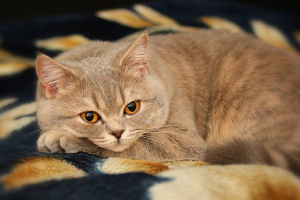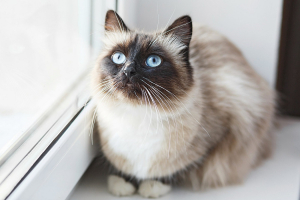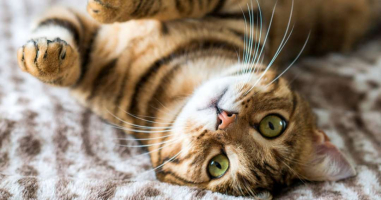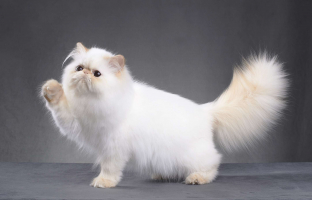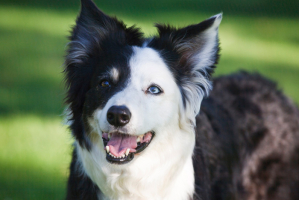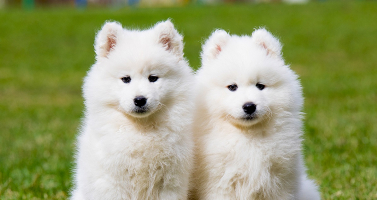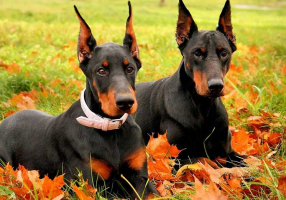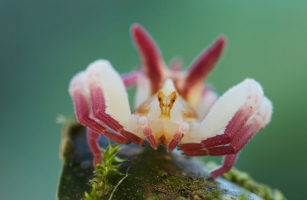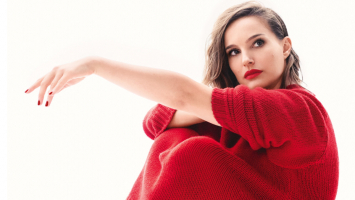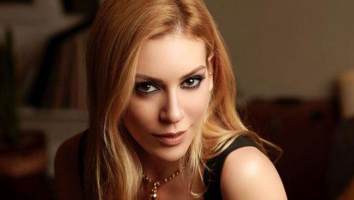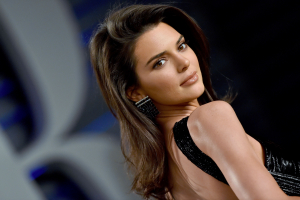Top 16 Most Beautiful Longhair Cat Breeds
Longhaired cats are the consequence of a genetic abnormality, and researchers have limited the gene down to the fibroblast growth factor 5 gene, or FGF5. As a ... read more...result, it's not uncommon to find kittens from the same litter with short hair and others with long hair. Many cat breeds are available with long fur. Several of the items on this list are available in orange, while others are only available in silvery, pointed designs. What do they all have in common? They'll need to be brushed thoroughly at least twice a week. No knots or mats are essential for a happy long-haired cat. Here are the most beautiful longhair cat breeds.
-
The Balinese is a domestic cat breed with long fur, Siamese-style point coloring, and sapphire-blue eyes. The Balinese is also known as the purebred long-haired Siamese since it is a natural mutation of that breed and is therefore essentially the same cat but with a medium-length silky coat and a uniquely plumed tail. As with their short-haired counterparts, there is a genetic distinction between traditional or "old-style" and current body types. Color varieties originating from the Colorpoint Shorthair are recognized a different breed in the United States, known as the Javanese. There is no link between these cats and the Indonesian islands of Bali and Java, from whence their names are derived.
Balinese people, like their Siamese forebears, are social, talkative, lively, curious, and intellectual. Both varieties of Balinese are nonetheless comparable to their Siamese cousins. While both are relatively slim, beautiful fine-boned cats with long legs and tails, tidy oval paws, almond-shaped eyes, and wide pointed ears, the traditional form has a larger head and stronger frame. The contemporary form has a more wedge-shaped head with a long tapering nose and larger, wider ears, on top of a slenderer and longer body.
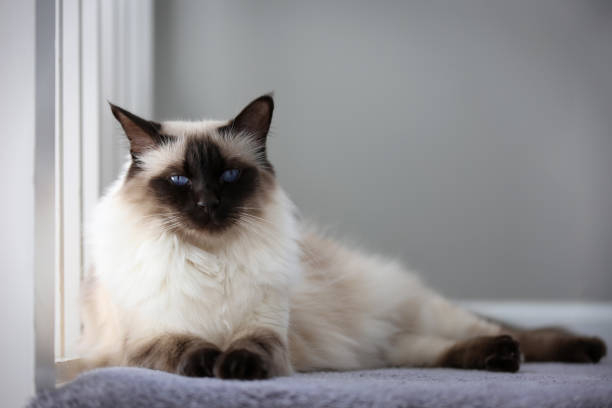
istockphoto 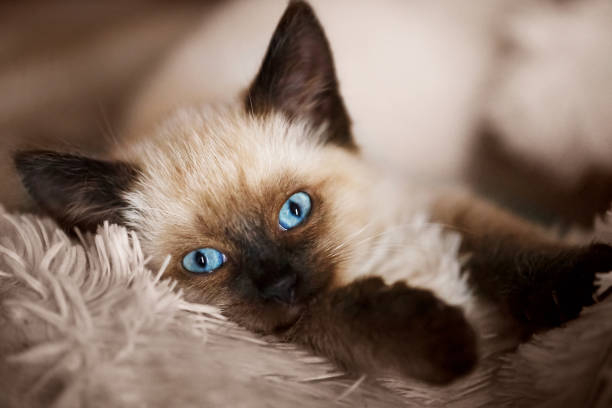
istockphoto -
The Birman, commonly known as the "Sacred Cat of Burma", is a kind of domestic cat. The Birman is a color-pointed long-haired cat with a silky coat, intense blue eyes, and contrasting white "gloves" on each paw. Birmanie, the French word for Burma, inspired the breed's name. Birmans are medium-sized, rectangular dogs with a wide face and a distinctive Roman nose. Their ears should be as broad at the base as they are tall, and they should be situated on top of the head as well as on the side. The eyes should be a rich sapphire blue and rounded.
The Birman's fur is medium-length and should be smooth. They have no undercoat, unlike Persians and Himalayans, and hence are less prone to matting. The coat color is always pointed, save for the breed's hallmark contrasting pure white, symmetrical "gloves" on each paw. The white must include all toes and must end in front at the articulation or transition of toes to metacarpals. These gloves should reach far further up the rear of the leg, terminating with an inverted V half to three-quarters up the hock. Any additional white spot on the points is regarded a major flaw. The base body colour is white to cream, with a wash of colour that corresponds to the points but is much paler.
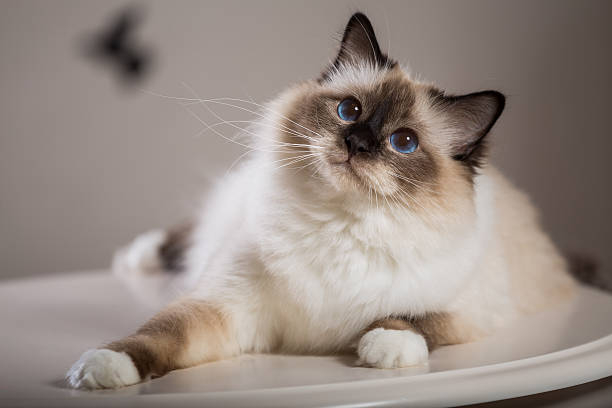
istockphoto 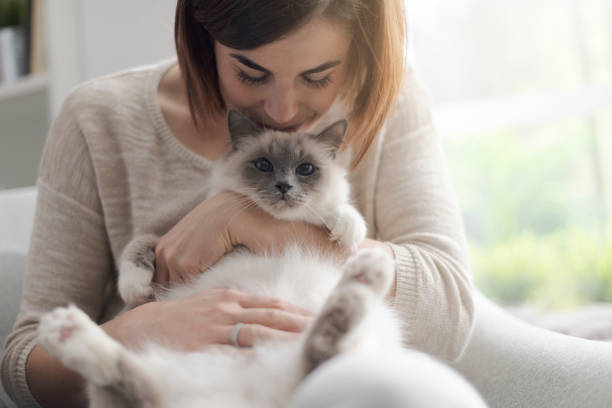
istockphoto -
The Cymric is a domestic cat breed. Some cat registries classify the Cymric as a semi-long-haired variation of the Manx breed rather than a distinct breed. Except for the length of the hair, the two variations are identical in every other way, and kittens of either variety may occur in the same litter. The name is derived from Cymru, the original Welsh term for Wales, despite the fact that the breed is not related with Wales, and it is possible that the name was given in an attempt to offer a "Celtic"-sounding name for the breed. The Manx lineage of the breed originated in the Isle of Man, while Canada claims to have produced the long-haired variety. Some registries call the breed the Longhair Manx or something close.
The Cymric is a muscular, compact medium to big cat with a strong bone structure that weighs seven to thirteen pounds. They have a clumsy physique and an oddly circular shape. Cymrics have huge, full eyes and ears that are widely spread. Unlike the parent Manx breed, a Cymric's hair is medium-length, thick, and well-padded across the main body, lending to the spherical look. All colors and patterns acceptable for the Manx are also acceptable for the Cymric (though exactly which qualify varies by organization).
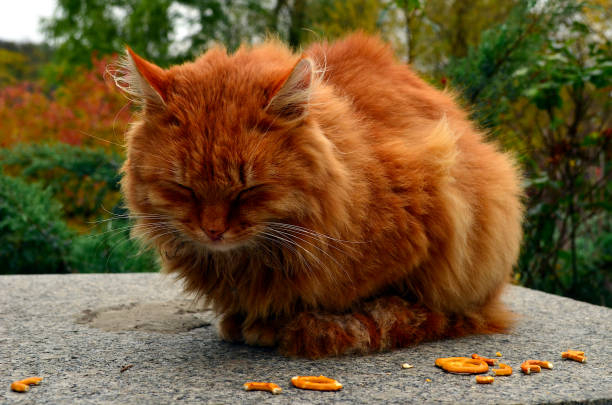
istockphoto 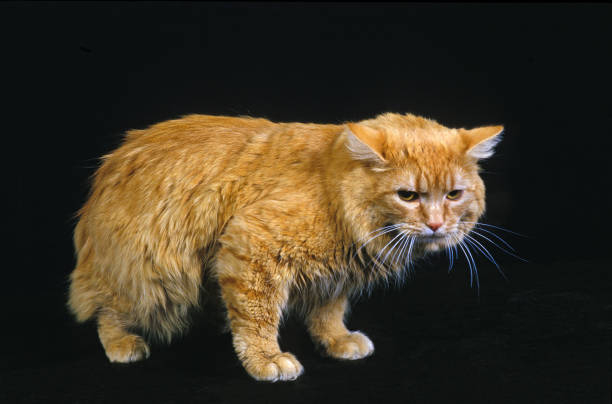
istockphoto -
The Himalayan (short for Himalayan Persian, or Colourpoint Persian as it is popularly known in Europe) is a long-haired cat breed or sub-breed identical to the Persian, with the exception of its blue eyes and point coloration, which were obtained via crossing the Persian with the Siamese. Some registries describe the Himalayan as a long-haired Siamese sub-breed or a Persian colorpoint sub-breed. The World Cat Federation has combined them with the Colorpoint Shorthair and Javanese to form the Colorpoint breed.
The Himalayan, like Persians in general, has a spherical (cobby) body and short legs, making it difficult for them to jump as high as other cats. However, since the 1960s, some have had a more Siamese-like physique and so do not have this constraint, but may not be accepted as show cats, depending on the exact breed criteria of the organization in question.
Himalayans, like other Persians, are classified into two types: conventional or doll-faced and peke-faced or ultra-typed, which has more severe squashed-looking facial characteristics. The seal-point Himalayan in the left shot is doll-faced, but the red(flame)-point in the title image is peke-faced. Show Himalayans, like peke-faced Persians, have a nose break and very huge, round eyes, with the nose leather located between the eyes. Breeder or pet Himalayans have longer noses than show cats, and they may have a larger snout and smaller eyes than show cats. However, all three varieties of Himalayan cats are Himalayans.
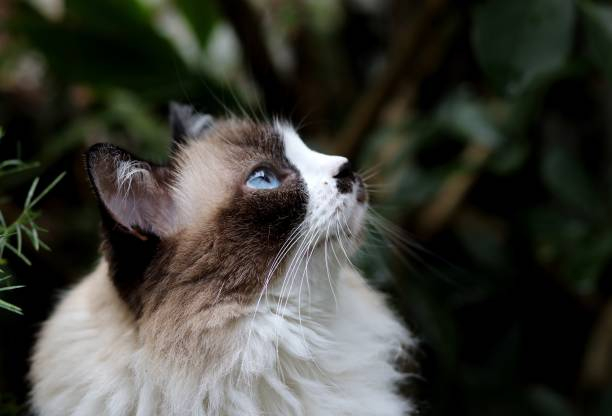
istockphoto 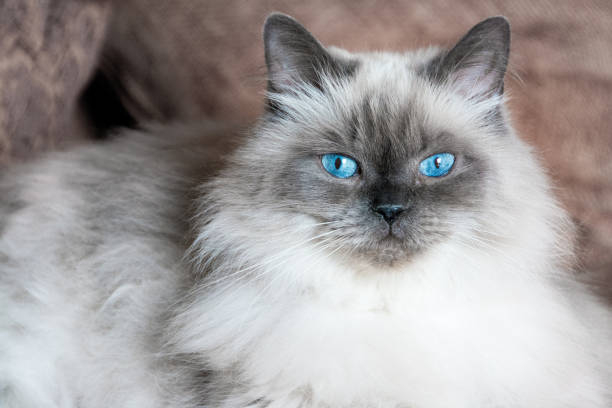
istockphoto -
The Javanese is a purebred domestic cat that is also known as the Colorpoint (or Colorpoint) Longhair in various registries (though the term has different connotations). It is an Oriental, the long-haired counterpart to the Colorpoint Shorthair. The variety originated in North America, and its name derives from the practice of naming Oriental-type cats after Southeast Asian locations. It is a Balinese offshoot that has been outcrossed to Siamese and Colorpoint Shorthair, and has coat patterns that are not acceptable in those breeds. Individuals can have or not have point colouring.
Depending on the cat registry, it may be considered a separate breed, a Javanese branch of the Balinese, or a combined breed with the Himalayan termed simply Colourpoint. One registry, however, applies Javanese to a different breed. Javanese dogs have a long, silky coat that comes in a range of hues (unlike the actual native domestic cats of Java which have short hair). It has a single coat, as opposed to the double coat (with guard hairs) common in other long-haired breeds; as a result, it rests close to the skin and gives the cat a longer, sleeker appearance than is normal for long-haired cats.
The Javanese, like the Colorpoint Shorthair, has point colouring (with a light body and darker face and extremities), but is allowed to have coat colors and patterns that the Balinese and Siamese do not. These can be dark brown to near white, reddish to bluish, tabby, lynx point, cream point, tortoiseshell (tortie), tortie point, and other unique combinations ("blue-cream point", "cinnamon-tortie lynx point", etc.). In addition to the four Balinese fundamentals, CFA provides 24 Javanese-division color combinations. Javanese people have blue eyes by default.
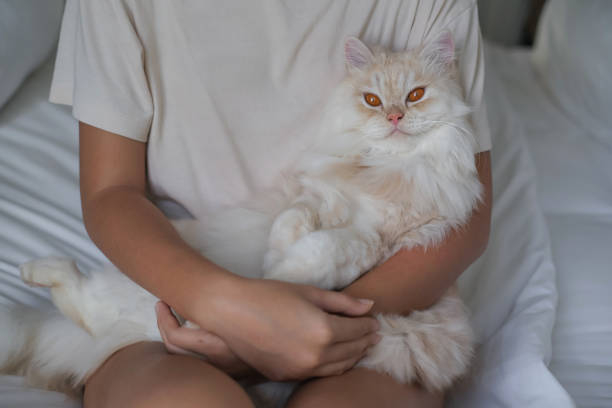
istockphoto 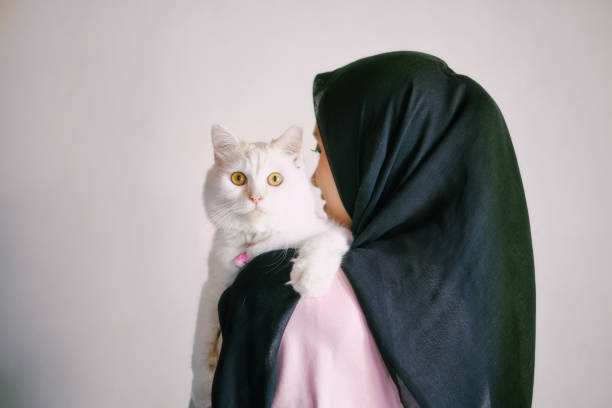
istockphoto -
Maine Coons are huge, domesticated cats. It is one of North America's oldest natural breeds. The breed originates in Maine, the official state cat of the United States. The breed was prominent at cat exhibits in the late 1800s, but its survival was challenged when long-haired breeds from other countries were introduced in the early 1900s. Since then, the Maine Coon has made a resurgence and is currently the world's third most popular pedigreed cat breed.
The Maine Coon is a huge and gregarious cat, which may explain why it has earned the nickname "the gentle giant". The Maine Coon is most recognized for its great size and rich coat of fur, which allows the giant feline to live in the severe environment of Maine, its native state. The Maine Coon is sometimes referred to as having "dog-like" features. Because of this feline's huge size, specialists have identified various health issues appearing in the breed, such as feline hypertrophic cardiomyopathy and hip dysplasia.
Maine Coons have various physical characteristics that help them survive severe winter temperatures. Their strong water-resistant hair is longer and shaggier on their underbelly and back for added protection while walking or lying on wet snow or ice surfaces. Their long, bushy raccoon-like tail resists sinking in snow and may be wrapped over their face and shoulders for warmth and protection from wind and blowing snow. When sitting on a frozen surface, it can even be wrapped over their backside like an insulated seat cushion.
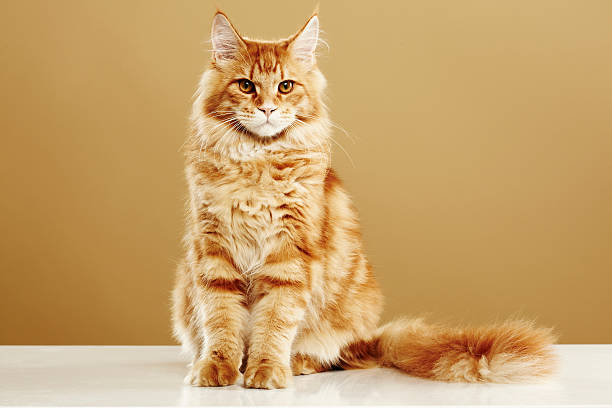
istockphoto 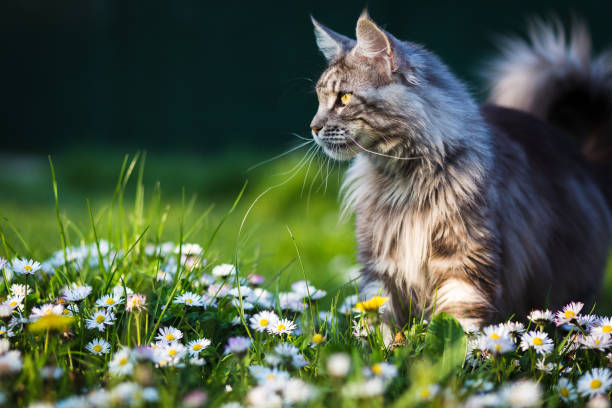
istockphoto -
The Norwegian Forest cat is a domestic cat breed that originated in Northern Europe. With a top coat of long, glossy, water-shedding hair and a woolly undercoat for insulation, this natural breed is adapted to an extremely cold climate. The origins of the breed may have been a landrace of short-haired cats introduced to Norway by the Vikings about A.D. 1000, who may also have brought with them long-haired cats, such as the forebears of the contemporary Siberian and Turkish Angora. The Norwegian Forest cat was nearly extinct during WWII, but the Norwegian Forest Cat Club's breeding effort increased the cat's population.
It was recognized as a breed with the European Fédération Internationale Féline in the 1970s, when a cat fancier named Carl-Fredrik Nordane became aware of the breed and worked to register it. Norway, Denmark, Sweden, Iceland, and France are all big fans of the breed. It is a large, robust cat with long legs, a bushy tail, and a solid physique, comparable to the Maine Coon breed. It excels at climbing, thanks in part to its powerful claws. The average lifetime is 14 to 16 years. The breed has been linked to kidney and cardiac disorders. Complex rearrangements of glycogen branching enzyme (GBE1) can induce prenatal hypoglycemia and late-juvenile neuromuscular degeneration in glycogen storage disorder type IV in this breed.
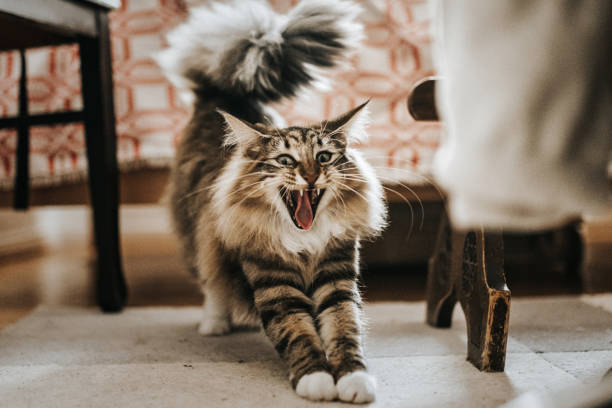
istockphoto 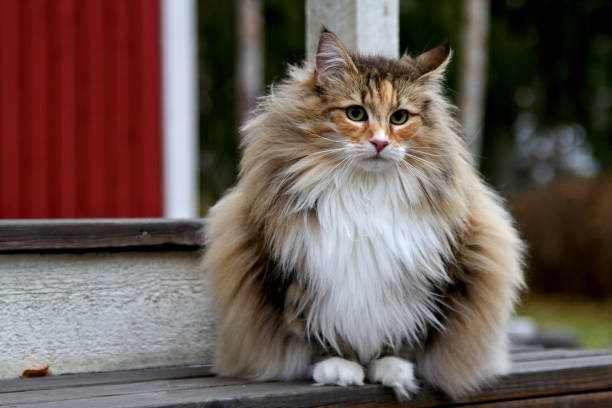
istockphoto -
The Persian cat, commonly known as the Persian longhair, is a long-haired breed with a round face and short snout. Around 1620, the first known forebears of Persian cats were transported into Italy from Persia. Persian cats, which have been well recognized by cat fanciers since the late nineteenth century, were initially accepted by the British, and then by American breeders following World War II. Some cat fancier groups classify the Himalayan and Exotic Shorthair as varieties of this breed, while others classify them as unique breeds.
Breeders' selective breeding has resulted in the development of a broad range of coat colors, but it has also resulted in the creation of more flat-faced Persian cats. This head form is popular with fanciers, but it can cause a lot of health issues. As with the Siamese breed, some breeders have worked to conserve the older form of cat, the traditional breed, which has a more prominent muzzle and is more popular with the general population. In certain nations, over half of the population suffers from hereditary polycystic kidney disease. In 2021, Persian cats were ranked as the fourth-most popular cat breed in the world according to the Cat Fanciers' Association, an American non-profit cat registry.
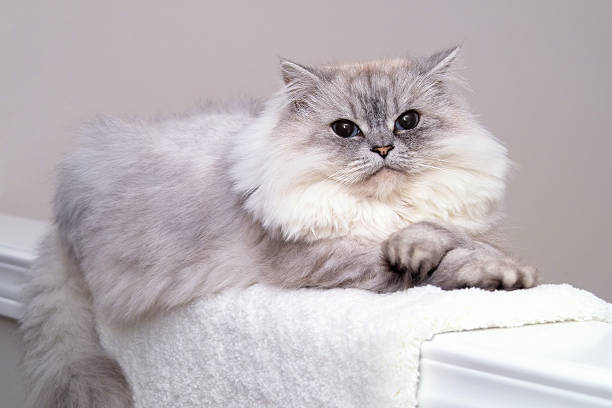
istockphoto 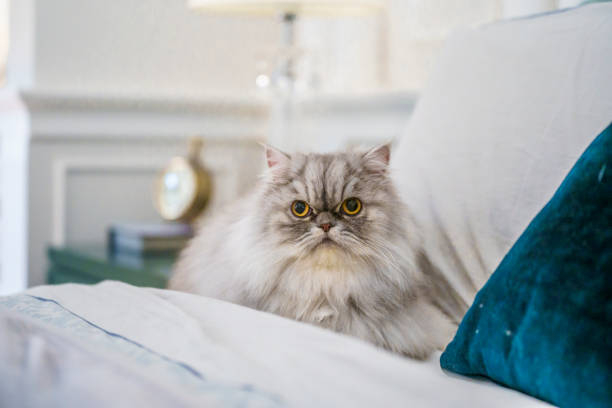
istockphoto -
Ragdoll cats have a distinctive colorpoint coat and blue eyes. It has a semi-long and silky-smooth coat, and its morphology is massive and hefty. Ann Baker, an American breeder, created Ragdolls in the 1960s. They are well-known for their calm, tranquil disposition and friendly personality. The moniker 'Ragdoll' comes from the fact that individuals from the original breeding stock tend to get limp and relaxed when lifted up. Both the United Kingdom and the United States are particularly fond of the breed.
Ragdolls are commonly referred to as "dog-like cats" or "puppy-like cats" because of their proclivity to follow humans about, their openness to handling, and their lack of hostility against other pets. Ragdolls have upside-down V-shaped patterns on their foreheads, huge round blue eyes, soft, thick coats, thick limbs, long tails, and soft bodies. Color rings are usually tricolor or bicolor.
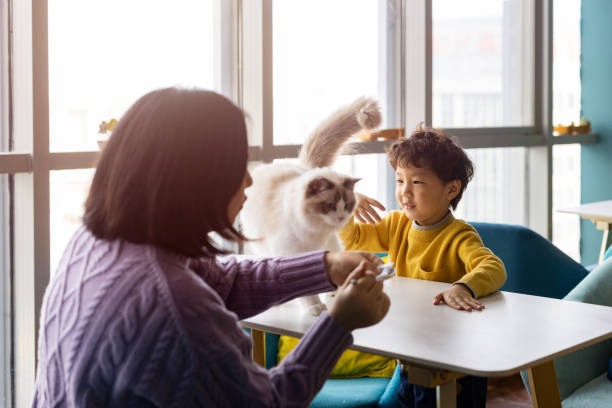
istockphoto 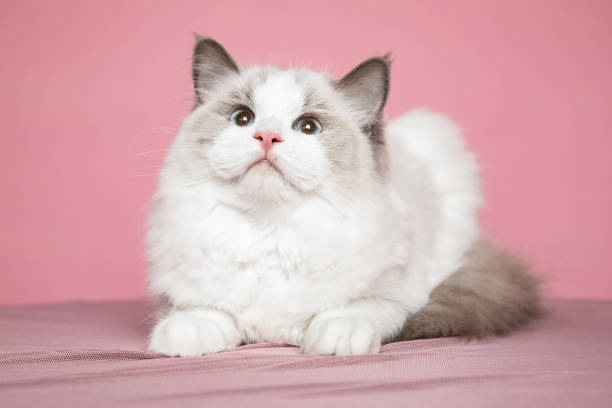
istockphoto -
The Somali cat shares genetics with the Abyssinian cat. They have a unique luxuriant coat due to having two copies of the recessive gene for long hair, unlike its cousin, the Abyssinian cat. Somalis are known for their vivacity and gregarious spirit. Their sleek physique, long tails, and huge pointed ears have given them the moniker "Fox Cat". Their ticking coats have between four and twenty colors on each hair and are exceedingly fine in structure, making them gentler to the touch than other cat species' coats. The cat itself is of modest size.
The standard or ruddy Somali is golden brown with black ticking. There are 28 Somali colors in all, however some organizations only accept a subset of these. All Somali registration organizations allow normal (also known as reddish), sorrel (commonly known as red), blue, and fawn. Most clubs accept usual/ruddy silver, sorrel/red silver, blue silver, and fawn silver as well. Some registers may accept chocolate, lilac, red, cream, usual-tortie, sorrel-tortie, blue-tortie, fawn-tortie, chocolate-tortie, lilac-tortie, and silver versions of these hues (e.g. blue-tortie silver).
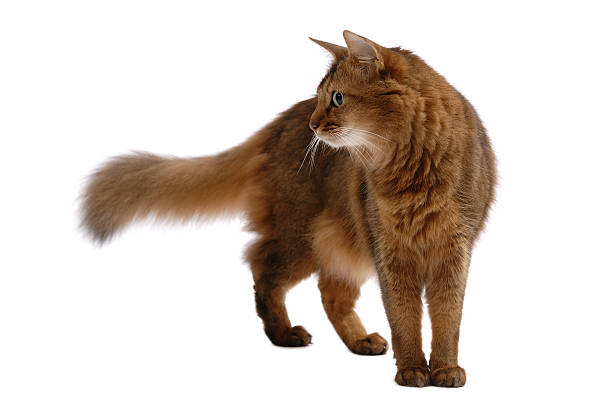
istockphoto 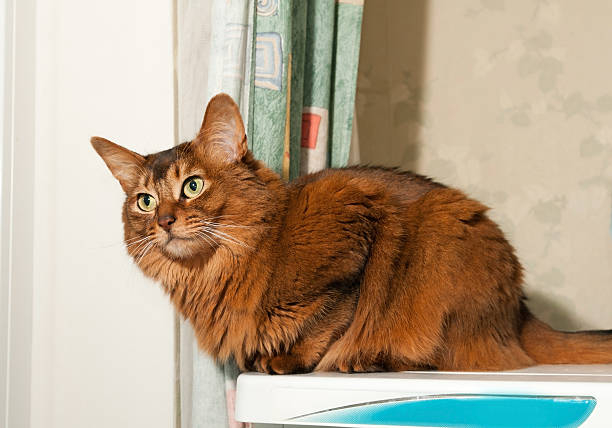
istockphoto -
The Turkish Angora is a domestic cat breed. Turkish Angoras are an old, natural cat breed that evolved in central Anatolia. The breed was first documented in the 17th century. Outside of the United States, the breed is commonly known as the Angora or Ankara cat. These cats have slim, beautiful bodies. In the winter, they blend in nicely with the snow and are sometimes misidentified as snow weasels due to their length.
Turkish Angoras have graceful, flowing bodies and short, silky coats. A juvenile Turkish Angora might be misidentified as a snow weasel. Turkish Angoras can have a range of colors, despite being noted for their shiny white coat and elegant tail. They are available in tabby, black, chocolate brown, and smoky colors. Blue, green, amber, yellow, and heterochromatic eyes are all possible. Ears are pointy, big, and spread apart. The eyes are almond-shaped, and the profile is divided into two straight planes. The plumed tail is frequently held perpendicular to the back, erect.
Turkish Angoras are active, clever, and playful. They form bonds with people, although they frequently choose a family member to be their permanent friend and protector. They want to be "useful" to their humans in any way they can, and their intellect may be impressive at times, displaying rudimentary problem-solving skills. Because of their intelligence and desire to engage with humans, they are readily trained. Turkish Angoras are active and frequently seek for "high ground" in the home. This perch is then utilized to watch household activity. Tops of doors, refrigerators, bookcases, and other furniture might all fall under this category. Some ride on the shoulders of their owners.
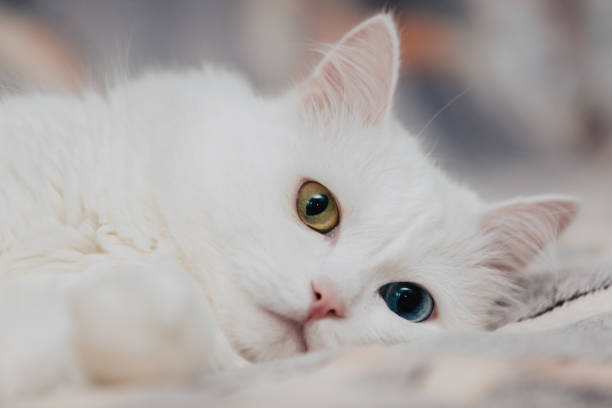
istockphoto 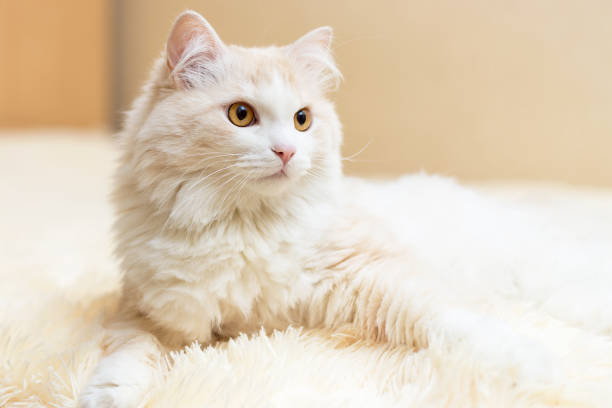
istockphoto -
The American Bobtail is a rare domestic cat breed that was established in the late 1960s. It is most known for its stubby "bobbed" tail, which is one-third to one-half the length of a typical cat's tail. This is the outcome of a genetic mutation in a cat body type that affects tail development, comparable to that of a Manx cat. Despite the similar name and physical appearance, the breed is not related to the Japanese Bobtail—the breeding programs are completely unrelated, and the genetic mutation causing the bobbed tail is known to be different because the mutation causing the American Bobtail's tail is dominant, whereas the mutation causing the Japanese Bobtail's tail is recessive. American Bobtails are a tough breed with both short and long hair.
Instead of being thick or fluffy, their coat is scruffy. In show animals, they can have any color of eyes and coat, with a great focus on the "wild" tabby appearance. Its body is stocky and somewhat long, with significant boning. The posture is clearly rectangular. The torso is large and full. The hips are huge, almost as wide as the chest, and the hind legs are longer than the forelegs, with large spherical feet that may have toe tufts. The head is a wide wedge with no flat planes and a comparable size to the body. A concave curve from the nose to the brow, or a rise to a large brow, a broad unpinched snout, prominent whisker pads, a gently sloping wide nose, and robust, powerful jaws characterize this breed.
The ears are medium in size, wide in base, and evenly situated on top and side of the head, with rounded tips. The eyes are virtually almond-shaped and proportional to the size of the skull. The aperture is oriented toward the base of the ear, with medium broad spacing and deep sockets. The color of the eyes vary with the color of the coat. While the animal is in repose, the end of the tail is visible over the back but not beyond the hock. The tail might be straight or curled, somewhat knotted, or bumpy.
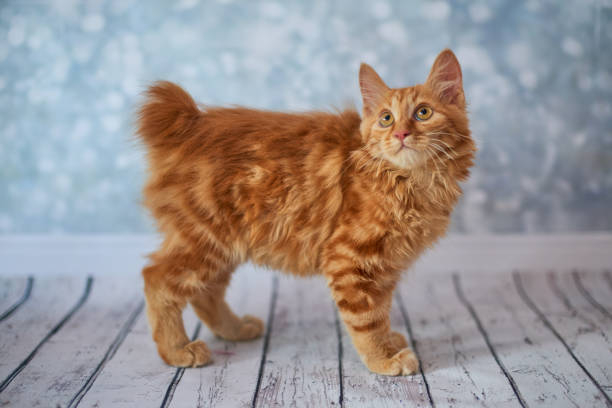
istockphoto 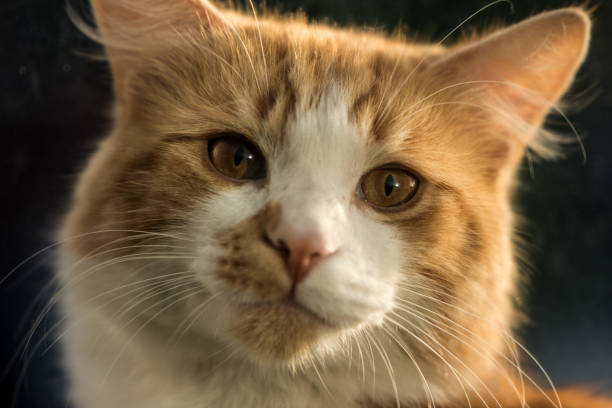
istockphoto -
The Japanese Bobtail is a domestic cat breed with a distinctive bobtail that resembles the tail of a rabbit rather than that of other cats. The variety is native to Japan; however, it is now spread worldwide. The breed has been recognized in Japan for generations, and it appears regularly in mythology and art. Japanese Bobtails, like most other breeds, may be practically any color (or colors, arranged in any number of patterns). Predominantly white calicoes are particularly popular among Japanese and cat fanciers, and are well portrayed in folklore, however various colorations are also permitted under breed standards.
This breed is suitable for families. They are good pets for youngsters because of their friendly nature and interact with them through mild chirpy noises. This breed is very drawn to water, is quite intelligent, and is recognized for its lively nature, which is constantly full of energy and mischief. Bobtails are an extremely loyal breed that make excellent friends. Because of its short fur, this breed sheds very little to moderately. Its coat is simple to maintain. Just like any other species, there may be a variety of health issues that are tied to heredity. However, Japanese Bobtails are typically healthy cats. The recessive gene and the shorter tails are not linked to any spinal or bone problems.
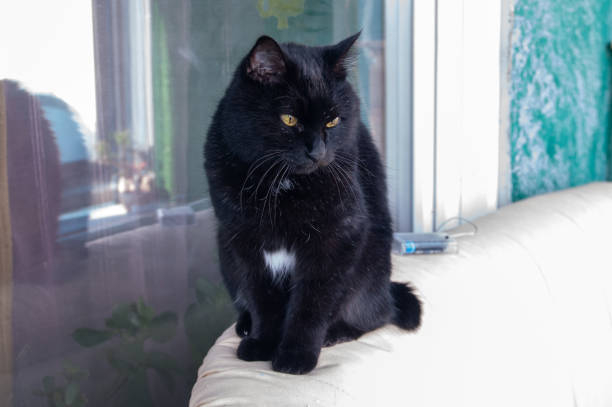
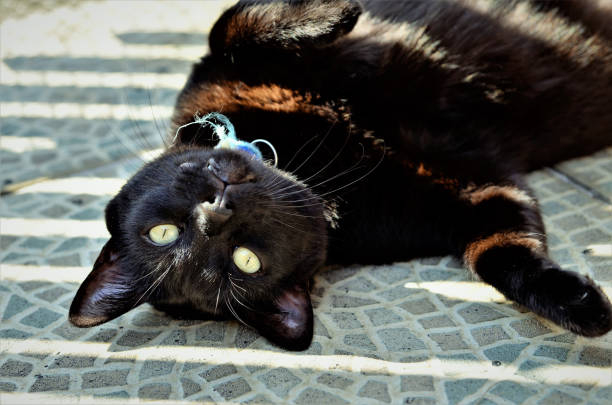
-
The LaPerm is a cat breed. The fur of a LaPerm is curly (thus the name "perm"), with the tightest curls around the neck and the base of the ears. LaPerms come in a variety of colors and designs. LaPerms are known for their loving personalities. The LaPerm is a rex breed that originated in the United States and is now found in many nations throughout the world. The breed is genetically distinct and unrelated to any other rex cat variety, with a dominant gene responsible for their curly coats. They have a sleek and athletic build, and their personalities are loving, lively, and extroverted. They are said to be hypoallergenic cats, causing a substantially lower amount of allergic reaction in people than regular cats.
Their coat is the most noticeable trait, with gentle waves, curls, and ringlets that resemble a shaggy perm. The LaPerm is a cat of moderation, with no extremes, and remains loyal to its original kind. It does, however, have a distinctive coat. The breed standard specifies a muscular foreign-type physique that is medium in size and has longish legs and a neck. The head is shaped like a modified wedge, with rounded curves and a snout that is somewhat wider than the wedge. The straight nose leads to a gap between the eyes and a flattish forehead in profile. LaPerms have wide noses, flaring ears, and medium-sized almond-shaped eyes.
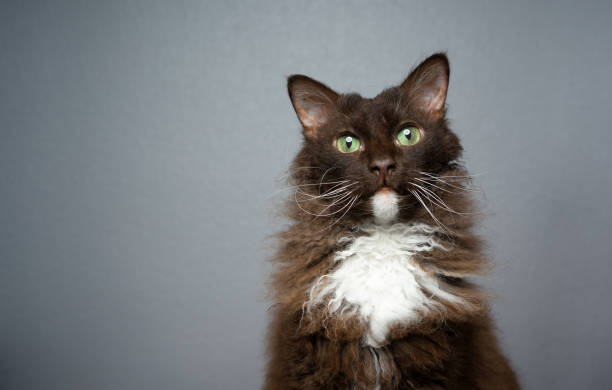
istockphoto 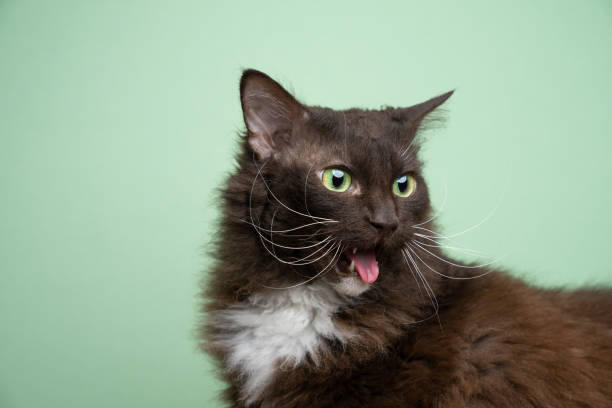
istockphoto -
The Scottish Fold is a domestic cat breed that has a natural dominant gene mutation that affects cartilage throughout the body, causing the ears to "fold", folding forward and down towards the front of the head, giving the cat an "owl-like" look. Scottish Fold received the breed's name in 1966, after being known as lop-eared or lops after the lop-eared rabbit. Longhaired Scottish Folds are variously known as Highland Fold, Scottish Fold Longhair, Longhair Fold, and Coupari, depending on registries.
Scottish Straights are Scottish Fold kittens who do not acquire folded ears. Originally, cats had just one fold in their ears, but through selective breeding, breeders have enlarged the fold to a double or triple fold, causing the ear to rest completely flat on the skull. The Fold's entire body shape is rounded, especially the head and face, and the eyes are huge and spherical. The cat's nose is small and gently curved, and its body is well-rounded with a padded appearance and medium-to-short legs. The top of the skull is domed, and the neck is relatively short. The Scottish Fold has a "sweet look" thanks to its widely separated eyes. The ears of the Scottish Fold are folded, thus the name.
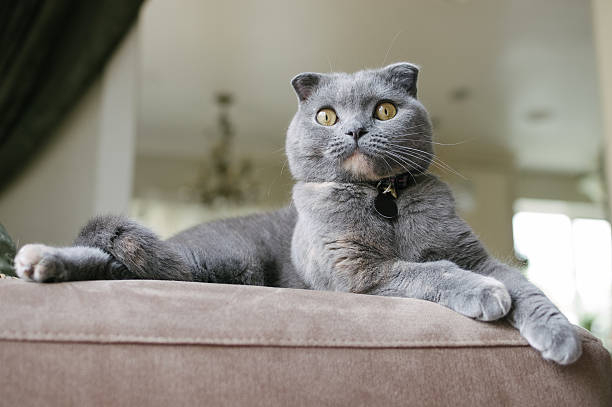
istockphoto 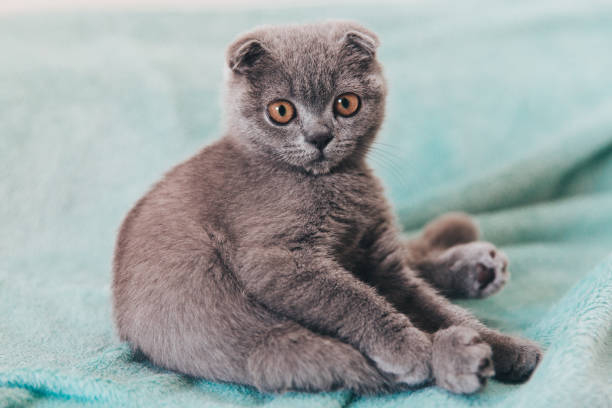
istockphoto -
The Selkirk Rex is a cat breed with curly fur. The Selkirk Rex is unique among all Rex breeds. In contrast to the Devon Rex and Cornish Rex, the hair is regular length and not partially gone. There are two types of hair: longhair and shorthair. The Selkirk Rex coat is plusher and thicker than the LaPerm coat. The LaPerm gene is a simple dominant, whereas the Selkirk gene (Se) is an incomplete dominant; incompletely dominant allele pairs result in three possible genotypes and phenotypes: heterozygous cats (Sese) may have a fuller coat that is preferred in the show ring, while homozygous cats (SeSe) may have a tighter curl and less coat volume.
Long and short coat lengths have been produced for the breed. It is a huge breed with a strong build, akin to a British Shorthair. The coat is very soft, with a woolly appearance and feel and loose, unstructured curls. The head is spherical, with large rounded eyes, medium-sized ears, and a prominent nose that is half the length of the head. An severe break, such as a Persian, is a disqualifying defect. The breed accepts all colors, including albinism in the pointed, sepia, and mink variants, as well as bicolors, cinnamon, silver/smoke, and chocolate and lilac series. This breed has a highly thick coat and a significant shedding proclivity.
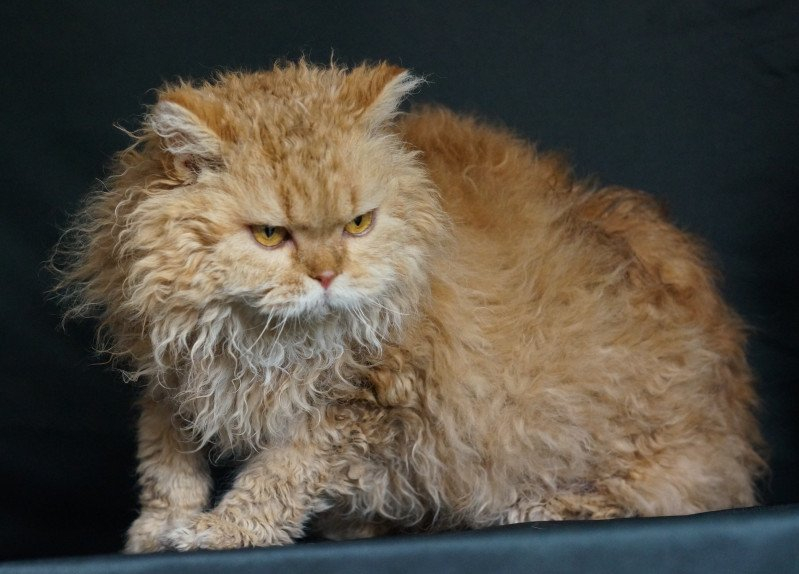
istockphoto 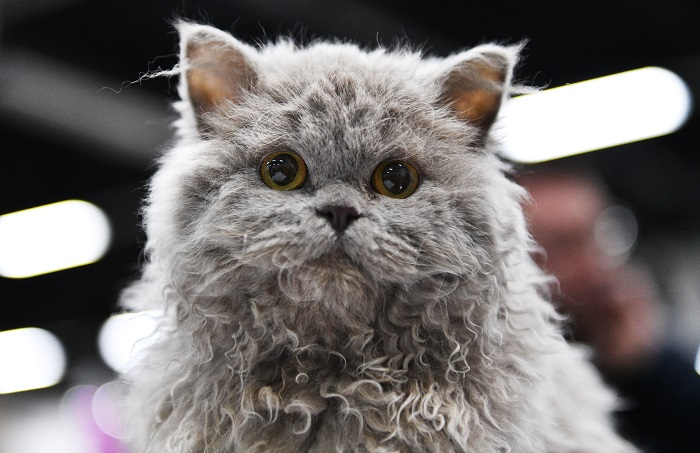
istockphoto


















